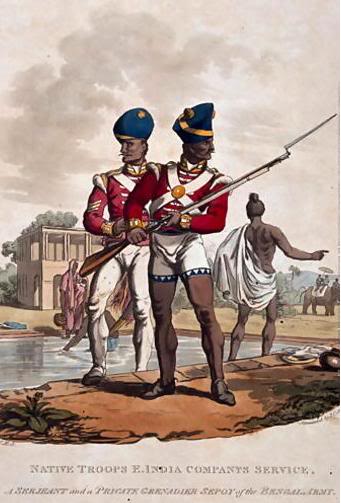

However, after some initial setbacks, the Britishers brutally suppressed the revolt and swiftly regained all lost territories. The revolt saw the soldiers, peasants and even many local rulers, princes and dispossessed Zamindars fight against what they called the firangi rule. The revolt started in Meerut, and from there spread like a fire engulfing almost all of North India. However, the immediate factor which led to the outburst of the rebellion was the rumour about the cartilage of the Enfield Rifle being made out of cow and pig fat. There were several religious, social, political and economic causes which had set into motion an atmosphere of general hatred towards the foreign government. The Revolt was however swiftly suppressed by the English authorities.Ĭomplete Step by Step Answer - The factors which led to the onset of revolt is multifaceted. For the first time in the history of colonial rule, there was a PAN India struggle to oust the foreign government. Military forces, the rebels were capable of putting up a prolonged and determined resistance.Hint - The Revolt of 1857 is often referred to as the First Was of Indian Independence. The Siege of Lucknow is significant as it is seen as one of the major turning points in the Indian Rebellion of 1857. With the relief of the Residency on 16 November 1857. The rebels cut off all supplies to the garrison, and it was not until November that relief arrived. Residency garrison, which was soon besieged by rebel forces. In September 1857, a small British force managed to break through the rebel defenses and establish a foothold in Lucknow. Another relief force was subsequently sent, which wasĪlso defeated in the First Battle of Lucknow on 30 July 1857. They had then proclaimed Nana Sahib as Peshwa, the ruler of Avadh.ĭuring late June and early July 1857, a column sent to relieve Lucknow was defeated at the Battle of Chinhat. The sepoys had seizedĬontrol of Avadh after expelling its Nawab Wajid Ali Shah from the kingdom during early June 1857. These were later joined by troops from Awadh, led by Begum Hazrat Mahal. The city was defended by rebel Sepoys under Nana Sahib Peshwa. The siege was laid by forces of the British East India Company on 14 June 1857 andĮnded with the relief of Lucknow on 16 November 1857.

The Siege of Lucknow was a prolonged battle in the Indian Rebellion of 1857. Hundreds of innocent people had been killed. The British troops eventually regained control of Cawnpore, but not before A group of women and children who were trying to escape the city were ambushed by the rebels and massacred. The city was under siege by rebel sepoys, and the British garrison was running low One of the most brutal episodes of the mutiny occurred in Cawnpore (now Kanpur). They held the city for several months before being driven out by British troops. In Delhi, the sepoys captured the city and proclaimed a new emperor.

This only served to increase the level of violence, and soon all of India was in a state of chaos. The British responded by sending in troops to quell the unrest. TheyĪttacked men, women, and children indiscriminately. In Meerut, near Delhi, mobs of angry Indians attacked British homes and businesses. The sepoy units in southern India remained loyal, but many from the Bengal ArmyĮarly violence in the mutiny was directed against European civilians. He survived and was tried and hanged four days later, on April 8, 1857.ĭuring May and June 1857, more Indian troops had revolted against the British. Pandey was shot in the chest byīritish forces during the fight. Pandey revolted by shooting a British sergeant-major and a lieutenant. Unit was about to be disarmed and disciplined after refusing to use new rifle cartridges. On March 29, 1857, Mangal Pandey, a sepoy in the Bengal Army, fired the first shot of India's First War for Independence on the parade ground at Barrackpore.


 0 kommentar(er)
0 kommentar(er)
